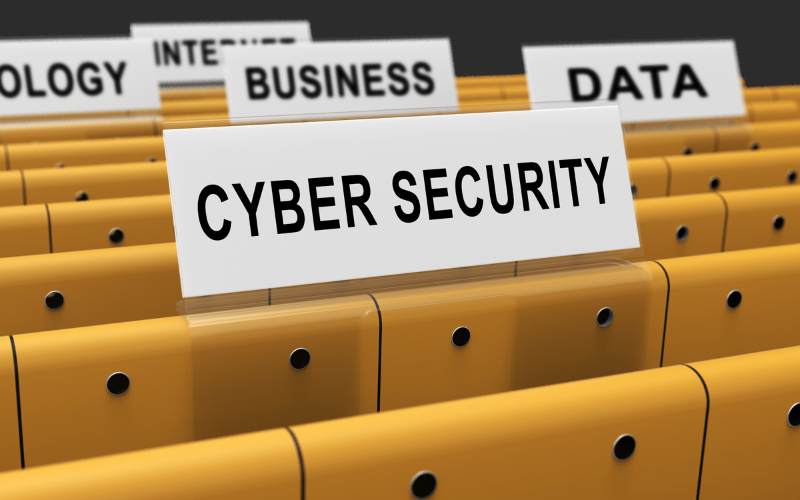What should you understand about Cyber Risk Management?
January 27, 2023

Cyber-risk management is the process of finding, evaluating, and ranking potential risks to an organization’s information and technology systems, as well as taking steps to reduce or eliminate those risks. Cyber-risk management has never been more critical than now, as businesses are increasingly dependent on technology.
One of the essential parts of cyber risk management is figuring out where a company’s systems and networks might be weak. This means finding places where sensitive data is stored or sent and where attackers might be able to get in. Once possible weaknesses have been found, it is crucial to figure out how likely and destructive a cyberattack on those weaknesses could be. This assessment will help organizations decide which risks to deal with first and in what order.
Once possible risks have been found and evaluated, organizations must take steps to lower or eliminate them. This can be done by putting security controls like firewalls, intrusion detection systems, and encryption, as well as security policies and procedures to ensure employees know and follow the best ways to keep sensitive information safe.
Another essential part of cyber-risk management is essentializing how to handle an incident. This means having a plan for responding to a cyber-attack, such as steps to stop the attack from doing more damage and spreading, as well as measures to recover from the attack and get things back to normal.
Effective cyber-risk management also includes regular monitoring and testing of security controls and policies to ensure they are working as planned and to find and fix any new vulnerabilities that may pop up. This includes regular vulnerability assessments, penetration tests, and watching the organization’s networks and systems for anything out of the ordinary.
Organizations need good cyber risk management to protect their information and technology systems from cyberattacks. It involves finding and evaluating possible risks, putting in place steps to reduce or eliminate them, planning how to handle an incident, and keeping an eye on and testing the system. Since businesses depend more on technology today, cyber-risk management must be a top priority to protect their assets and reputation.
Why should you study how to deal with cyber risks?
One of the most important reasons to study cyber-risk management is that cyber-attacks are becoming more and more likely. As technology keeps getting better, so do the ways cybercriminals use to get into sensitive information without permission. This includes everything from personal data and financial information to intellectual property and information about the government. People can learn the knowledge and skills they need to protect organizations from these threats by studying cyber risk management.
Another reason to study cyber-risk management is that it could help you grow and advance your career. As the field of cyber risk management continues to grow and change, so does the need for experts in this field. This means that people with experience in cyber risk management may have more chances to move up in their careers and make more money.
People studying cyber risk management also learn many skills that can be used in many fields. Whether you work in the public or private sector, you need to know how to find and deal with cyber risks to protect the assets and reputation of your organization. It’s also a chance to learn about the latest technologies and methods in the field, which can help you stay ahead of the curve.
Also, in today’s digital age, cyber-risk management is more than just the job of IT or security professionals. It’s a cross-functional area that affects the whole organization and its stakeholders. So, professionals from different fields, like business, law, and compliance, can learn about cyber risk management.
In conclusion, studying cyber risk management is a good idea for anyone wanting to build a career in a field that moves quickly and constantly changes. With cyber-attacks becoming more common and the need for experts in this field growing, studying cyber risk management can give people the knowledge and skills they need to protect organizations from cyber threats and open up a wide range of career options.
To learn more or to enroll online, visit https://www.cybercert.ca/ or call 416 471 4545.

Lead Instructor qualified in CISSP, CCIE, and MCT with 25 years of training experience in Toronto.
Recent Posts

April 27, 2023
How to Prepare for the CISSP Exam: Tips and Resources
The Certified Information Systems Security Professional (CISSP) certification is a highly sought-after credential in the field of information security. It is a vendor-neutral certification that is recognized globally and indicates a high level of proficiency in the field of cybersecurity. Passing the CISSP exam requires a lot of dedication, hard work, and preparation. In this […]
Read More
April 25, 2023
The Best Practices and Standards for CISSP Professionals
CISSP (Certified Information Systems Security Professional) is a globally recognized certification for information security professionals. CISSP professionals are expected to possess a broad range of knowledge and skills in various security domains, such as access control, cryptography, security operations, and software development security. However, possessing knowledge and skills alone is not enough to excel as […]
Read More
April 23, 2023
How to Optimize Your Cloud Costs and Performance
In today’s world, businesses rely heavily on cloud computing to store and process their data. The cloud has become an essential part of modern computing infrastructure, providing businesses with cost savings, scalability, and flexibility. However, the benefits of cloud computing have some challenges. One of the most significant challenges businesses face is how to optimize […]
Read More